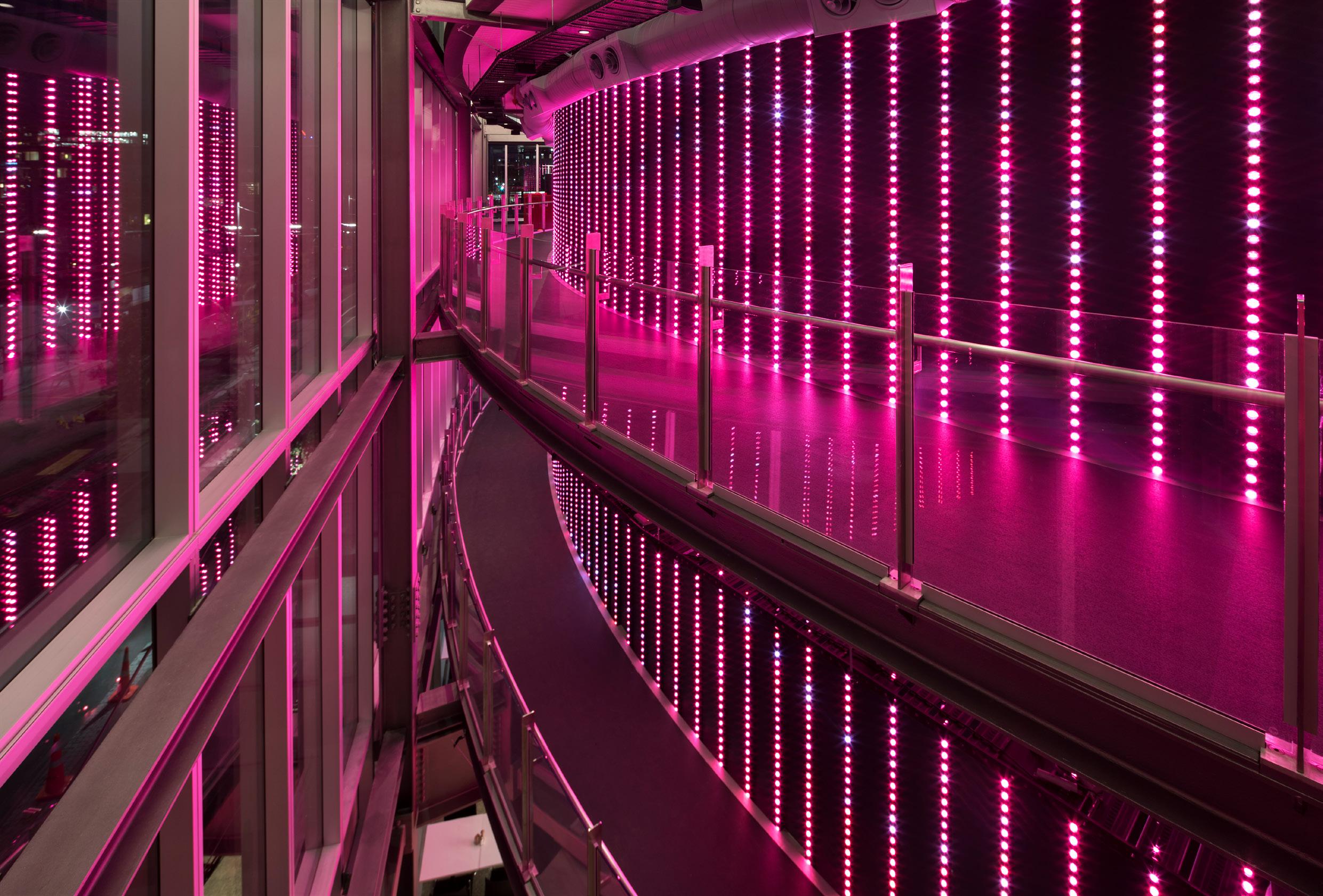
To make a monster, you must first become one.


To make a monster, you must first become one.
On behalf of the artists and everyone behind the scenes, Auckland Theatre Company welcomes kaiako and ākonga to Auckland Theatre Company in 2025.
Our Creative Learning programme runs workshops for ākonga, school matinee performances, and curriculum-linked resources.
If you teach senior students this pre-show pack helps you prepare to see live performances as part of the NCEA Drama Curriculum. This resource will help you to get the most out of your visit to the theatre, priming you to see beyond the performance and consider the connections to your drama curriculum.
Once you’ve seen the production, download the full Education Pack for further insights to the production.
PRE-SHOW PACK WRITTEN BY EMILY HURLEY
PRE-SHOW PACK ACTIVITIES WRITTEN BY ANNA RICHARDSON
Watch the Trailer:
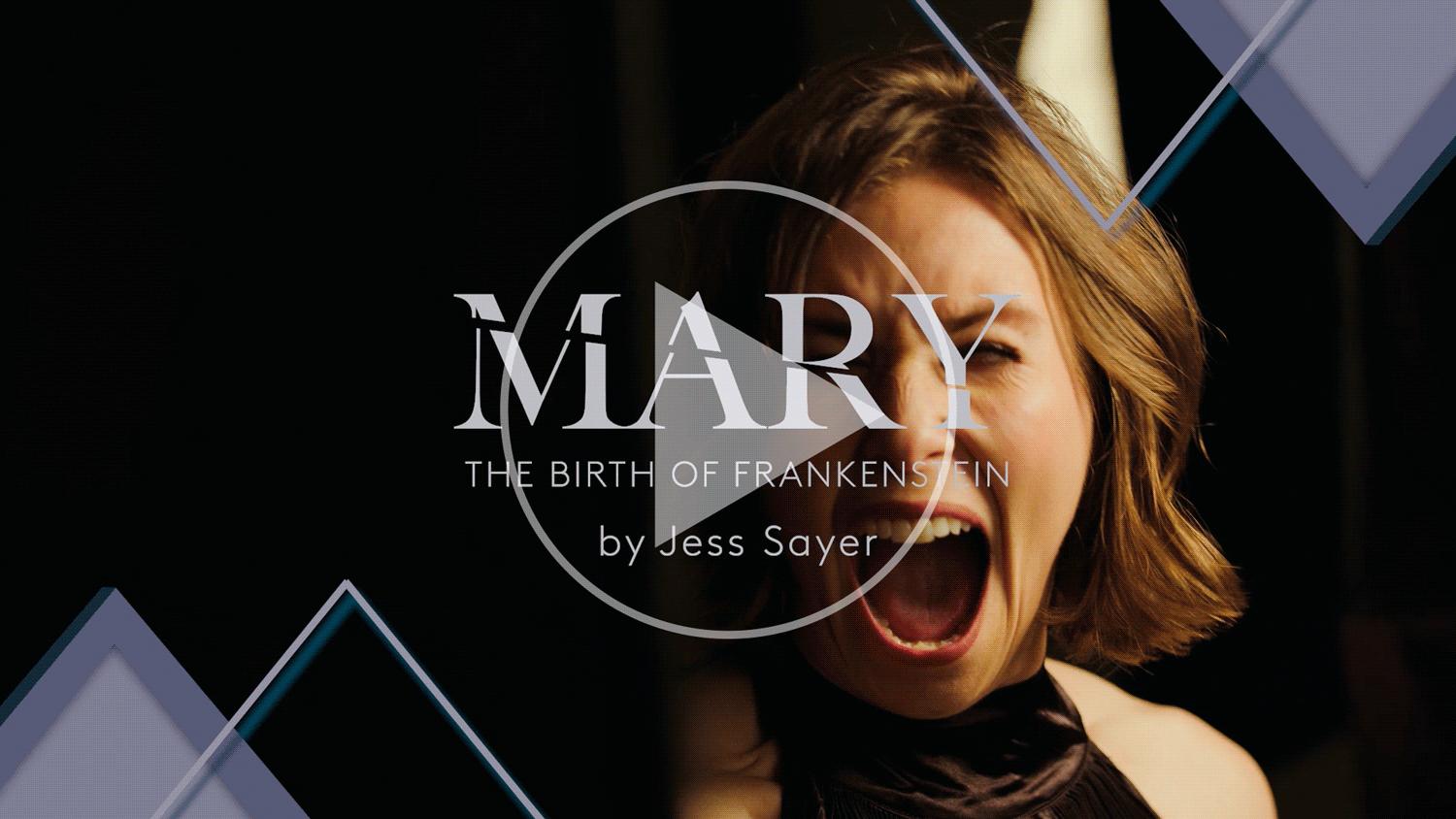
Duration: 2 hours, including interval (estimated)
Advisory: Includes offensive language, depictions of drug use, sexual content and violence.

Written by Emily Hurley, ATC Teaching Artist on MARY: The Birth of Frankenstein
The story of Dr Frankenstein and his monster has fascinated audiences for centuries since its conception in 1816 by a then 18-year-old Mary Shelley. Fearing persecution due to the gruesome content of the book and prevailing misogynistic attitudes of the time, Mary initially published her novel Frankenstein: Or the Modern Prometheus anonymously, immediately attracting readers.
Made famous worldwide by the 1931 motion picture, this tale of creator and creation has spawned countless re-imaginings from the Mad scientist Jumba Jookiba and his blue creature Stitch from Disney's Lilo and Stitch to Frank-N-Furter of the Rocky Horror Picture Show and the 2023 film Poor Things directed by Yorgos Lanthimos.
In this theatrical re-imagining, Jess Sayer pulls focus back to the woman who unleashed the monster, on the night that Mary was struck with the inspiration to write her story.
This play is based on true events and real people – but don't expect to see a naturalistic historical drama, things are about to get
“... I had a dream, which was not all a dream.
The bright sun was extinguished, and the stars
Did wander darkling in the eternal space, Rayless, and pathless, and the icy earth Swung blind and blackening in the moonless air. The waves were dead and the clouds perished. The world was void.
And men forgot their passions... And all earth was but one thought –and that was death…”
– Darkness by Lord Byron

1816 – The Villa Diodati, Geneva, Switzerland.
During a monumental thunderstorm on the shores of Lake Geneva, Mary Shelley, her husband Percy Shelley and her step sister Claire Clairemont arrive at the Villa Diodati, belonging to the famous poet Lord Byron and his physician John Polidori.
This gathering of young, experimenting artists takes a competitive turn when they are all challenged by Lord Byron to write ghost stories. Just as Mary Shelley looked back at the ancient Greek myth of Prometheus through the lens of what was happening in her time, Jess Sayer brings her modern perspective to the story of Mary Shelley and her comrades.
Ripping into the social dynamics of making art in a patriarchal society, eyeing the hypocrisy of male “liberators”, and exploring the nuances of sexuality in the 1800s, Sayer sets the stage to purge centuries worth of righteous anger in this electrifying production of MARY: Birth of Frankenstein.



Mary Shelley is often exalted as a heroine of the gothic romantic period, a widespread movement in art and literature that revolved around the supernatural, the unknown, life after death, the dangers of both science and religion, and a special reverence for nature: for its beauty, its laws and processes.
Besides the macabre events of her novel Frankenstein, the peculiar and tragic events of Mary's life leading to the creation of this remarkable story, has also held captive imaginations.
Mary’s mother, Mary Wollstonecraft was notorious in her time as a fierce advocate for women’s liberation and a prolific writer. Her publication of A Vindication of the Rights of Women cemented her in history as one of the founders of feminist philosophy.
She died eleven days after Mary’s birth in London, 1797 - likely due to an infection caused by improper medical practices. Mary’s upbringing became the responsibility of her father, William Godwin, who was also a well-known writer and philosopher.
After Wollstonecraft’s death, Godwin published Memoirs of the Author of A Vindication of the Rights of Woman. Intended to be a heartfelt dedication to his late wife, most believed he went too far, shamelessly describing details of Mary’s love life.
The public vitriol surrounding her famous parents gave little Mary Wollstonecraft-Godwin an air of dark providence - as historians Dorothy and Thomas Hoobler have stated, “the world was truly aware of her, before she was aware of the world.”
Mary herself claimed that since birth she has been, “nursed and fed with glory.” She not only felt the burden of her birth being the cause for her mother’s death, but also the weight of her father’s expectations for her to be brought up like a “true philosopher” and to follow in her mother’s footsteps.
Despite this, Mary did not receive the benefit of co-educational schooling that her mother had advocated for in Vindications. Mary’s only real teacher was her father, who sought to imbue her with his own philosophy and taught her to spell her name by tracing the letters on her mothers tombstone.
Mary suffered from extreme mood swings and as she grew older her relationship with her stepmother became impossibly tense, and Mary’s health began to deteriorate.
She suffered from a wasting of the arm and a skin infection that would not heal. To improve her physical and mental health she was sent to Ramsgate Health Resort, which dispensed out remedies that included being partially submerged in the sea via horse and carriage. The stay at Ramsgate did not improve Mary’s ailments or her mood problems and the family dynamic remained fraught.
Cast out of the house at 14 years old, Mary was shipped off to Dundee, on her way to meet a new family of strangers. This long and lonely sea voyage would later serve as inspiration for scenes in Frankenstein
In 1814, Mary began a relationship with the English poet Percy Shelley, who was already married but unhappy in his marriage.
Percy admired Mary's parents, William Godwin and Mary Wollstonecraft, and their progressive ideas about society and relationships. He had been financially supporting Godwin even before meeting Mary.
Percy was immediately drawn to Mary when he first saw her at the Godwin household, wearing a distinctive tartan dress that reflected her Scottish upbringing. For Percy, Mary represented the perfect intellectual companion - the daughter of two of his literary heroes. Mary was attracted to Percy's encouragement of her passionate nature and his admiration for her intelligence.
During their courtship, they often walked through the cemetery where Mary's mother was buried. Percy later described the moment Mary confessed her love as sublime and beyond description.
When Percy asked Godwin's permission to court Mary, Godwin was outraged by the relationship between a married man and his daughter. This rejection devastated Percy, who dramatically returned to the Godwin house threatening self-harm unless Mary agreed to run away with him. Mary calmed him down and pledged her loyalty to him.
In the following weeks, the lovers secretly planned Mary's escape from the Godwin household. Along with her stepsister Claire, they would travel to France together.
Godwin was so angry about Mary's elopement that he didn't speak to her for three and a half years, though he continued to accept financial help from Percy.
While traveling through Europe, the trio visited Castle Frankenstein and may have heard local legends about a physician who had once lived there and conducted unusual experiments. Mary became pregnant during their travels, and they returned to England.
On December 28th, 1814, Percy and Mary attended a lecture by Andrew Crosse, who demonstrated various electrical instruments. He described how he had captured electricity from thunderstorms like Benjamin Franklin and stored it in special jars. He also made the dramatic claim that when he passed electricity through stone, living insects emerged from it. During this era, science was so new and mysterious that it often seemed like magic to people. The connection between electricity and creating life made a strong impression on Mary.
During Mary's pregnancy, relationships within their small group became complicated. Percy encouraged his friend Thomas Jefferson Hogg to pursue Mary, based on their shared beliefs about relationships. Mary was initially uninterested in Hogg, though she later valued him as a friend.
Tragically, Mary's baby was born two months premature and died just eleven days after birth. Like her mother before her, Mary survived while her child did not, leaving her devastated. In her journal, Mary wrote about struggling to sleep and having a vivid dream where her baby came back to life. She wrote: "My little baby came to life again…it had only been cold and that we rubbed it before the fire and it lived - I woke up and found no baby."
All these events lead up to the year that Mary first penned her original draft of Frankenstein. 1816 is known as “The Year Without a Summer” due the climate abnormalities that were experienced worldwide. Throughout the summer months in Europe, reports documented extreme flooding, snowstorms and frosts. 1816 is also commonly referred to as “the poverty year” and “the year that eighteen hundred froze to death”. Historians now estimate the death toll to have been around 100,000 due to famine, disease, and conflict that resulted from the colossal eruption of Mount Tambora in Indonesia in April 1815, which ejected vast amounts of ash and gases into the atmosphere. This ultimately reduced sunlight reaching the Earth's surface, leading to the dramatic drop in temperatures in the northern hemisphere during the summer of 1816.
In 1816, death was all around her, having grown up under the scrutiny that arose from the circumstances of her birth, in the midst of a chaotic relationship and grieving the loss of her first child in a year defined by darkness - this is where Jess Sayer chooses to meet Mary Shelley. Interestingly, Mary’s journals are missing from this year - possibly destroyed by Mary in her later life in an effort to cleanse her image… leaving much to the imagination.
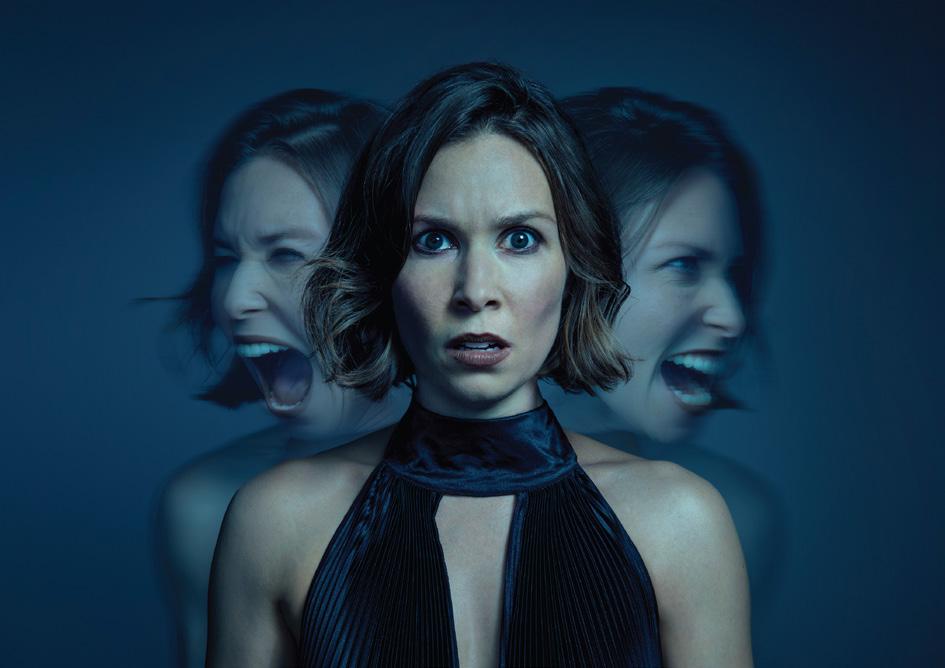
Here are some notable works and references inspired by Frankenstein and the life of Mary Shelley:
• 1823, Presumption; or, the Fate of Frankenstein - the first ever theatrical production, adapted by Richard Brinsley Peake.
• 1910 Frankenstein, a short silent horror film directed by J. Searle Dawley.
• 1927 Frankenstein, a theatrical adaptation by Peggy Webling.
• 1931 — Frankenstein, The film that made Frankenstein famous worldwide directed by James Wherle and starring Boris Karloff as Frankensteins monster — based on the play by Peggy Webling.
• 1992 — The Book Poor Things by Alisdar Gray.
• 2012 — The Film Frankenweenie directed by Tim Burton.
• 2021 Mary or the Birth of Frankenstein — fictional book, a re-imaging of the life of Mary Shelley by Anne Eekhout
• 2002 — Jumba Jookiba and his creation Stitch are inspired by Dr frankenstein and his monster in Disney's Lilo and Stitch written and directed by Chris Sanders and Dean DeBlois
• The Rocky Horror Picture Show references Frankenstein and his creature in the characters of Frankenfurter and Rocky.
• 2006 — The Monsters, Drawing upon letters, rarely tapped archives, and their Historians Dorothy and Thomas Hoobler created their own informed retelling of Mary and her affiliates.
• 2021 Mary or the Birth of Frankenstein — fictional book, a re-imaging of the life of Mary Shelley by Anne Eekhout.
• 2023 the film Poor Things directed by Yorgos Lanthimos.
Can you think of any other references to Frankenstein that you may have seen?
Like many of these works of art, this production is a re-telling of Mary’s story. How does Jess Sayer’s voice diverge or align with past retellings? How might it differ from Mary’s?
Auckland Theatre Company was founded in 1992, out of the ashes of the Mercury Theatre, and produced its first season in 1993.
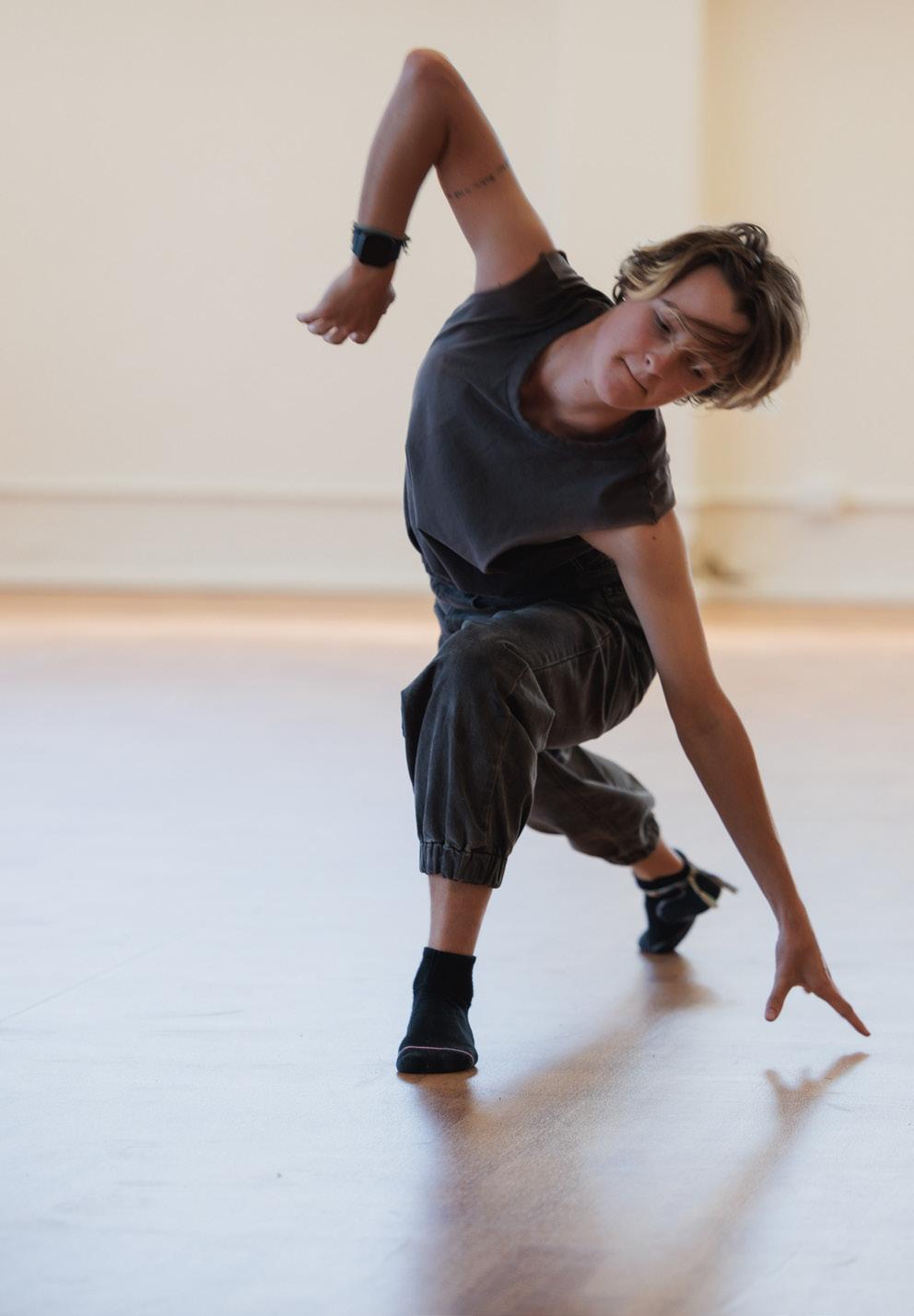
Auckland Theatre Company introduced itself to the world under the leadership of Simon Prast with the world premiere of David Geary’s Lovelock’s Dream Run, directed by Raymond Hawthorne ONZM at the Watershed Theatre. During Simon’s tenure, the company established itself as a successful artistic force, performing at venues across the city. The company was led by Artistic Director Colin McColl ONZM from mid-2003 to 2021. He created an unprecedented 18 seasons during a highly productive period in which Auckland Theatre Company established a permanent base at Balmoral, and set the scene for a theatre to call home.
In 2016, after a decade of dreaming, planning and fundraising, Auckland Theatre Company opened its own theatre, the ASB Waterfront Theatre in Wynyard Quarter, creating a new platform where theatre-makers could work at scale. Across its history, Auckland Theatre Company has nurtured new writing by New Zealand playwrights, investing in commissions and world premieres every year. This commitment to New Zealand theatre vernacular remains the backbone of the company’s artistic work.
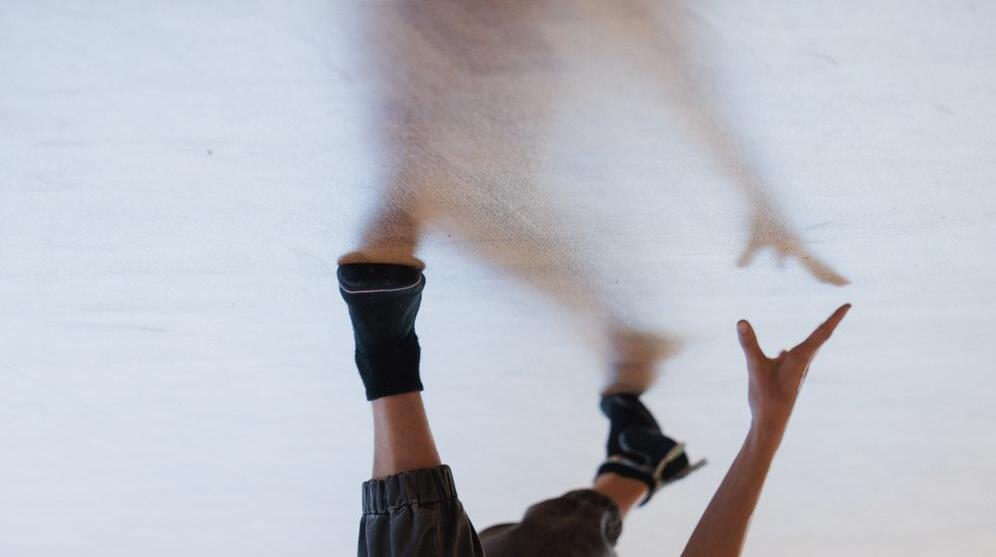
Our purpose of ‘Powerful storytelling that connects communities and enriches lives’ is manifested in five programme strands. We:
• Produce theatre of scale and ambition, presenting outstanding New Zealand and international work that thrills audiences and builds community.
• Develop new work by New Zealand theatre artists, reflecting the community of which we are a part and nurturing the next generation of New Zealand storytellers.
• Inspire and engage young people, through initiatives in which young people can participate through school and independently.
• Provide leadership for the performing arts sector, offering professional development and resources that nurture theatre workers.
• Programme ASB Waterfront Theatre to fulfil its potential as a cultural asset for the benefit of Aucklanders.
We strive to reach the widest possible audience with our produced mainstage work, visiting company’s work and our numerous workshops and community programmes around Tāmaki Makāurau.
This is your city’s theatre company. Nau mai, haere mai. Everyone is welcome.
Your kaiako have organised for you to see a production at Auckland Theatre Company as part of your drama programme this year. In Drama there are important reasons why viewing live theatre is essential to your learning:
• The opportunity to see actors in a professional, semi-professional or amateur theatrical context.
• The ihi, wehi and wana that you, the actors, and the audience that surrounds you in the theatre, feel as you watch the performance.
• The opportunity to have an emotional, physical and theoretical response to a performance.
• To respond to the director, designer and actor’s intentions that are put forth during the performance.
• To be inspired by the work you see and use the dramatic components in your own work back in the classroom.
Before you head to the theatre you might want to do all or a selection of the following activities to ensure that you are getting the most out of the performance, both personally and as a part of your NCEA assessment programme.
Before you begin preparing to visit the theatre you will want to set up a space to collate your work; to store your notes from your teacher, reflections, sketches, brainstorms, audio recordings, practice exam answers and digital education packs. This could be:
• A digital space such as a OneNote, Google Site or Google Folder.
• A written journal or portfolio
• A designated space in a binder or clear file
• A combination of all of above
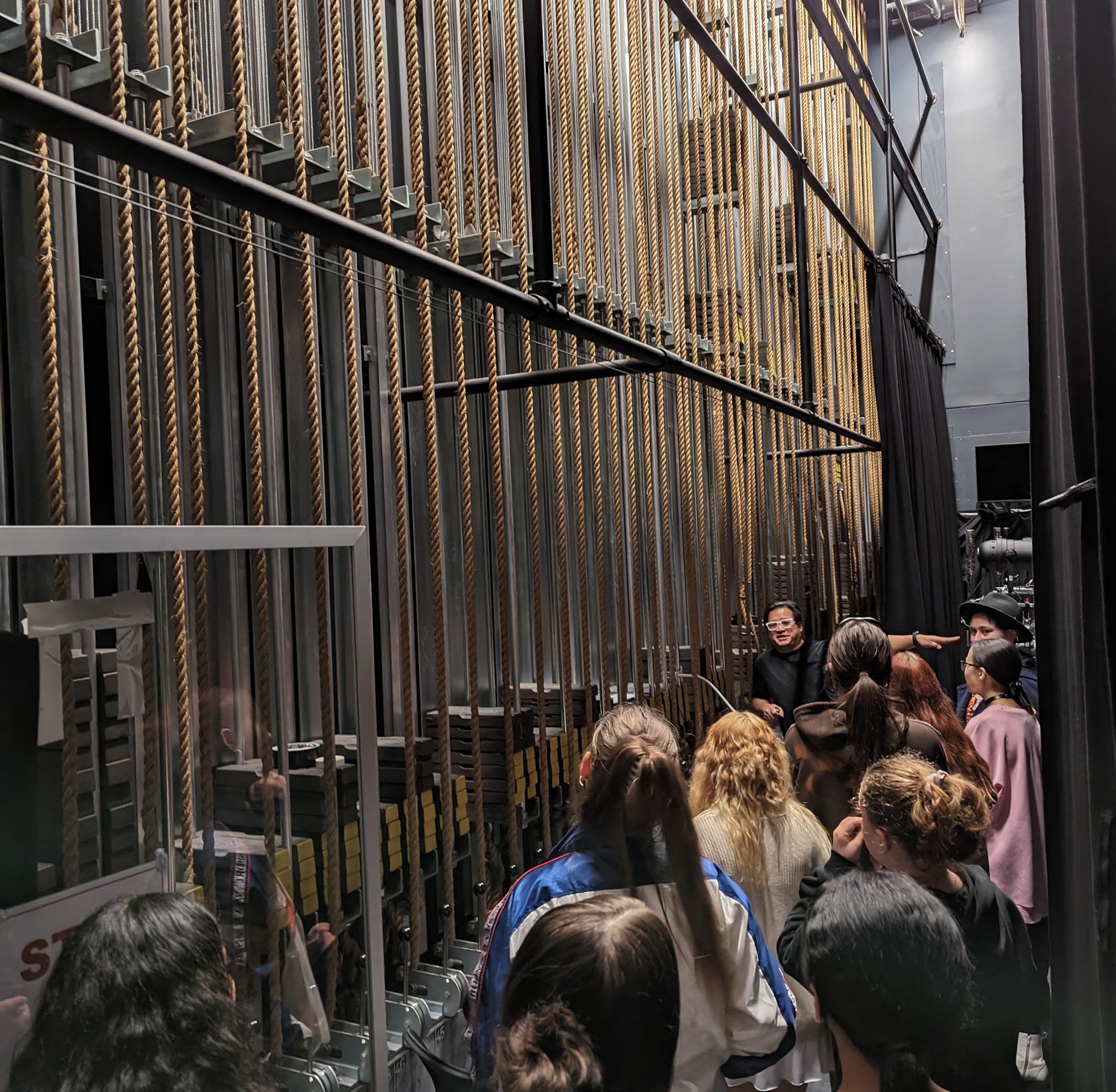
With the refresh of NCEA, all teaching and learning in Drama across all three levels of NCEA will draw from these Big Ideas:
Titiro whakamuri, kōkiri whakamua – Drama is influenced by whakapapa and is a way to respond to and share identity, culture, and perspectives
Mā whero, mā pango, ka oti ai te mahi – Drama is a collaborative, creative process
Poipoia te kākano kia puawai – Drama communicates through storytelling and creative expression to nurture and nourish people
Te whāriki kia mōhio ai tātou ki a tātou – Meaning in performance is created through whanaungatanga
Activity:
In small groups or as a class, discuss how these Big Ideas relate to viewing live theatre as a member of the audience?
• What learning are we doing in this context?
• Why is it important?
• How does what we experience at the theatre link to other work we might be doing in class?
Continuing to brainstorm in smaller groups or as a whole class using the Big Ideas, the bullet points on why viewing theatre is essential and the following ideas to guide your conversation. -
“Why is it important to see live theatre?”
“What skills do I need to develop to ensure I am going to get the most out of this theatre viewing experience?”
“Using the information provided - what is the play about? What do you know about the play already? Are there personal connections you can make with the topic/story?”
“What are you excited about?”
• Make sure someone is a scribe for this activity. They could collate everyone’s ideas on the white board or on big pieces of paper in groups.
• Ensure everyone gets a copy of the outcome of the brainstorm.
• Store this in your digital or written portfolio to return to.
We view theatre for entertainment, for enjoyment but also to be challenged and to think deeply. You will need to remember your response and unpack your thinking later in the year when you:
Level One: develop your report in class to submit for external assessment.
Level Two and Three: Sit your mock exams and your external exams.
Brainstorm what you might need to do when you visit the theatre to record your physical, emotional and theoretical response to the performance.
How will you set yourself up for success? What can your kaiako do to support you prior to the trip?
Note: Remember that enjoyment of the show is important and that you are going to be provided with a full education pack from Auckland Theatre Company. Some examples of what you could do are;
• If the set is visible when you enter the theatre, you might choose to sketch the set in a notebook prior to the show and then tuck that notebook away until the post show forum.
• Noting down an immediate response at the end of the show in a few words or sketches might capture what you are feeling in that moment.
• Voice recording the post show forum on your phone.
Keep your Exam Specifications in mind as you view live theatre.
As a drama student you will need to notice, think about and unpack the following:
• Taking note of the themes, ideas, symbols
• Noticing when the performance is linked to a wider context - historical, geographical, social and political
• Whether the performance uses a specific theatre form
• Actors use of techniques; body, voice, movement and space
• The choices that the design team has made and the impact they have on the performance and on you as a member of the audience
• The intention the Director(s) intended to communicate to the audience through their choices
• The wairua of performance and your personal response to the performance.
You will have approximately four to six hours (over a number of periods) during the year to compile a portfolio drawn from the learning that you do after seeing a play at Auckland Theatre Company. The portfolio will be based around the following task, presented as a powerpoint presentation that can include written, visual and audiovisual information, completed “over time” under teacher supervision:
Develop a response to a drama performance, with a personal connection to the wairua of the performance. Show development of your response over time, using evidence from the drama performance.
The following questions could support your response:
(a) How and why did the key message(s) of the drama performance have an effect on the audience? Why was this important?
(b) How and why were a range of drama components used to create effect in the performance? (Note: Drama components include techniques, elements, conventions, and technologies.)
(c) How and why did the wairua of the performance have an impact on you? You should consider your personal connection to:
• the relationship between performers and audience
• the intended effect of the performance on the audience
• your personal response to the performance, including how your understanding of your response has developed over time (due to unpacking what you experienced.)
In small groups discuss the task and what aspects of the performance you will need to look out for.
Using the information provided by Auckland Theatre Company, about the play, discuss what you think you might personally connect to and what you might be challenged by.
Keep your Exam Specifications in mind as you view live theatre.
As a drama student you will need to notice, think about and unpack the following:
• Taking note of the themes, ideas, symbols
• Noticing when the performance is linked to a wider context - historical, geographical, social and political
• Whether the performance uses a specific theatre form
• Actors use of techniques; body, voice, movement and space
• The choices that the design team has made and the impact they have on the performance and on you as a member of the audience
• The intention the Director(s) intended to communicate to the audience through their choices.
Below are specific aspects that you will need to keep in mind as you view theatre and then prepare for the external assessment in November. These pointers have been drawn from the NZQA website. (Questions that help you unpack these in detail will be provided in the Education Pack following the show.)
Year 12/Level Two NCEA:
• Drama elements, techniques, conventions, and technologies.
• For full specifications, reference this document: Level 2 Drama Assessment Specifications 2025
Year 13/Level Three NCEA:
• Connections between director/designer’s concept(s) and the performance
• Elements, Techniques, Technologies, Conventions
• Wider context
• For full specifications, reference this document: Level 3 Drama Assessment Specifications 2025
In small groups discuss what aspects of the performance you will need to look out for using the focus points for your year level.
Using the information provided by Auckland Theatre Company, about the play, discuss what you think the “wider context” of the performance might be.
Located in the heart of Wynyard Quarter, ASB Waterfront Theatre is a thriving hub of arts and culture and the home of Auckland Theatre Company. Built for the people of Auckland and beyond, the theatre showcases the very best of Aotearoa’s theatre, dance and film.
After seven years of fundraising, in 2016 the doors of ASB Waterfront Theatre opened with Billy Elliot the Musical. The building features a 675-seat theatre, The Lounge, bar and hosting gallery. Auckland Theatre Company’s season plays for up to 24 weeks of the year; this is complemented by national and international dance, film and theatre.
For information on how to find the theatre, or access information, please click here.
For information on school group visits, including our RAMS forms, please contact Sam Phillips, ATC’s Head of Learning & Participation on sam@atc.co.nz.

New Zealand sculptor Professor Robert (Bob) Jahnke created a pou for the theatre’s Logan Campbell Yard, Pou Whakamaumāharatanga mo Māui Tikitiki a Tāranga, which stands 6.4m tall.
In Aotearoa, Māui is the iconic Māori figure to celebrate the art of theatre. The tōtara and corten steel pou depicts a range of Māui stories. The three figures crowning the pou represent Māui slowing the sun, Māui securing fire from Mahuika, the goddess of fire, and Māui fishing up the North Island.
The rest of the pou includes references to Irawaru whom Māui transformed into a dog and Tunaroa, the eel slain by Māui.
On the base of the rear of the pou is a lizard which refers to the final action of Māui, his encounter with Hine nui te po, the goddess of the underworld.
The patterns on the pou are based on the North Auckland kirikiore pattern which could be found on canoe figureheads and treasure boxes.
The pou is made from corten steel and laminated tōtara , and serves as a focal point for pōwhiri and other ceremonial events at the main entrance to the new theatre.
Jahnke (Ngai Taharora, Te Whanau a Iritekura, Te Whanau a Rakairo o Ngati Porou) is an artist whose practice over the years has straddled design, illustration, animation, painting and neon installation. Of Samoan-German-Irish-Māori heritage, his work is typically based on political issues that face Māori people, the relationship between Māori and European colonisers and the impact of Christianity on Māori culture.
Jahnke is considered one of New Zealand's leading contemporary artists.
Pou whakamaumāharatanga mō Māui Tikitiki a Tāranga
The Memorial Post of Māui the Topknot of Taranga
Robert Jahnke ONZM (Ngāi Taharoa, Te Whānau a Iritekura, Te Whānau a Rākairo o Ngāti Porou) 2016
Proudly commissioned by Auckland Theatre Company for ASB Waterfront Theatre

Renowned American artist Leo Villareal created a LED light installation for the interior of the ASB Waterfront Theatre, facing onto Halsey Street.
This is Villareal's first major public commission in the Pacific. Villareal is regarded as one of the most prominent light sculptors of his generation.
This installation is made up of 8,260 LEDs, spans 29 metres and runs across three floors of the building. Villareal spent time at the theatre programming at night his algorithms that generate the LED sequences.
Villareal describes it as a sculpture to be explored. The public is welcome to come inside, take time with the artwork when the theatre is open. With the glazed façade the artwork is also viewable when the theatre is closed.
For Villareal the ability of an artwork to connect people and draw them together is a vital part of public art. He enjoys museums and art galleries but says, dragging art out and making it part of people’s everyday lives is really important.
